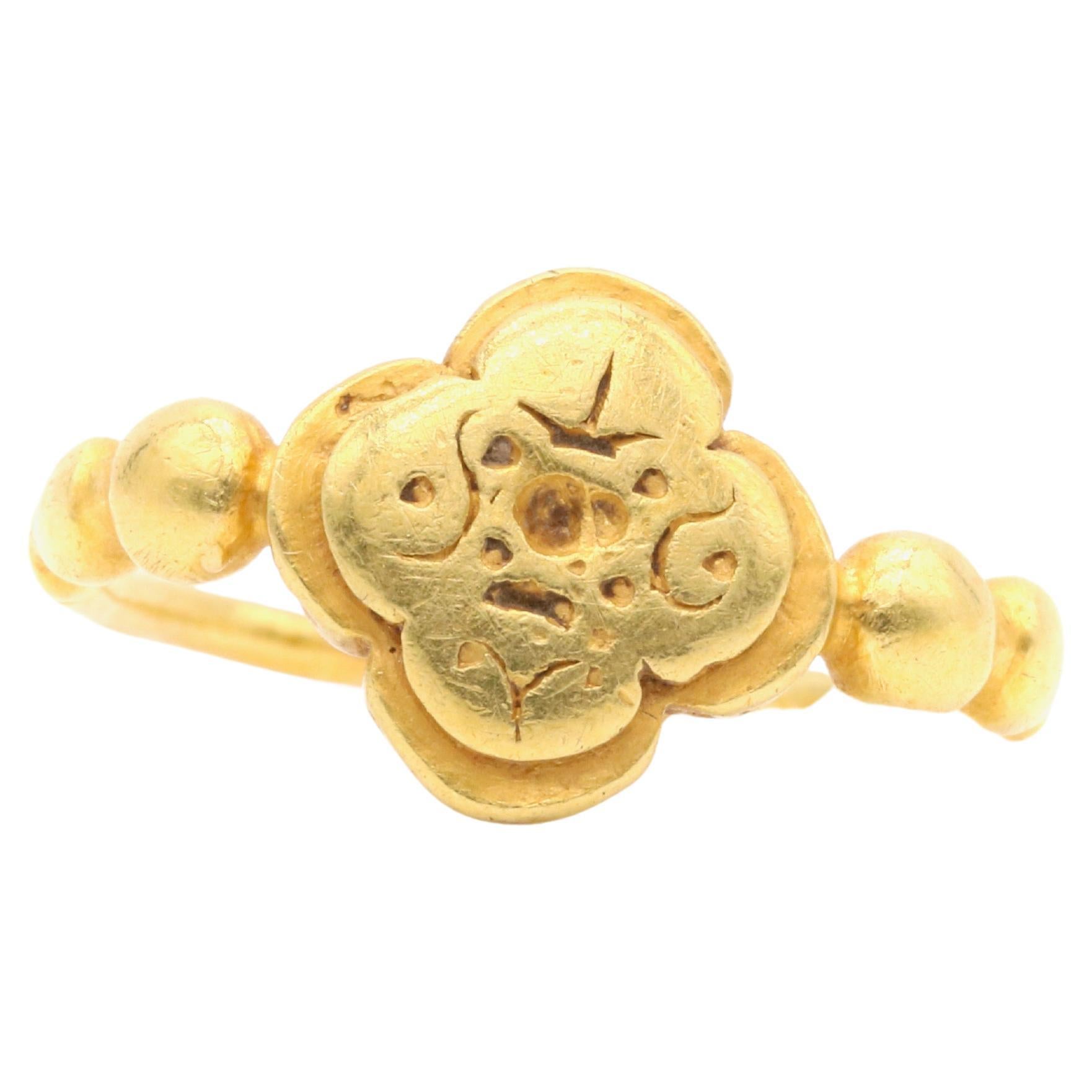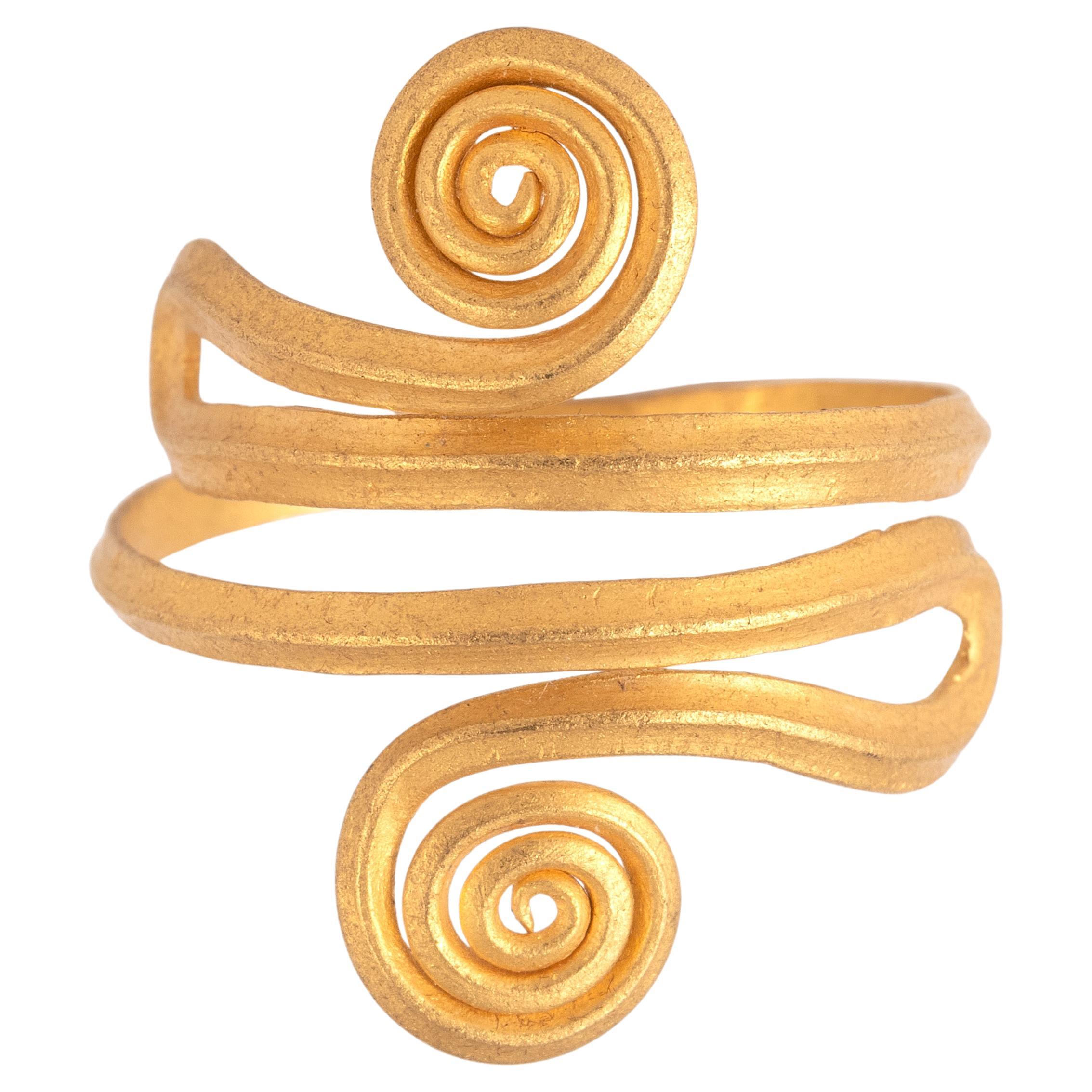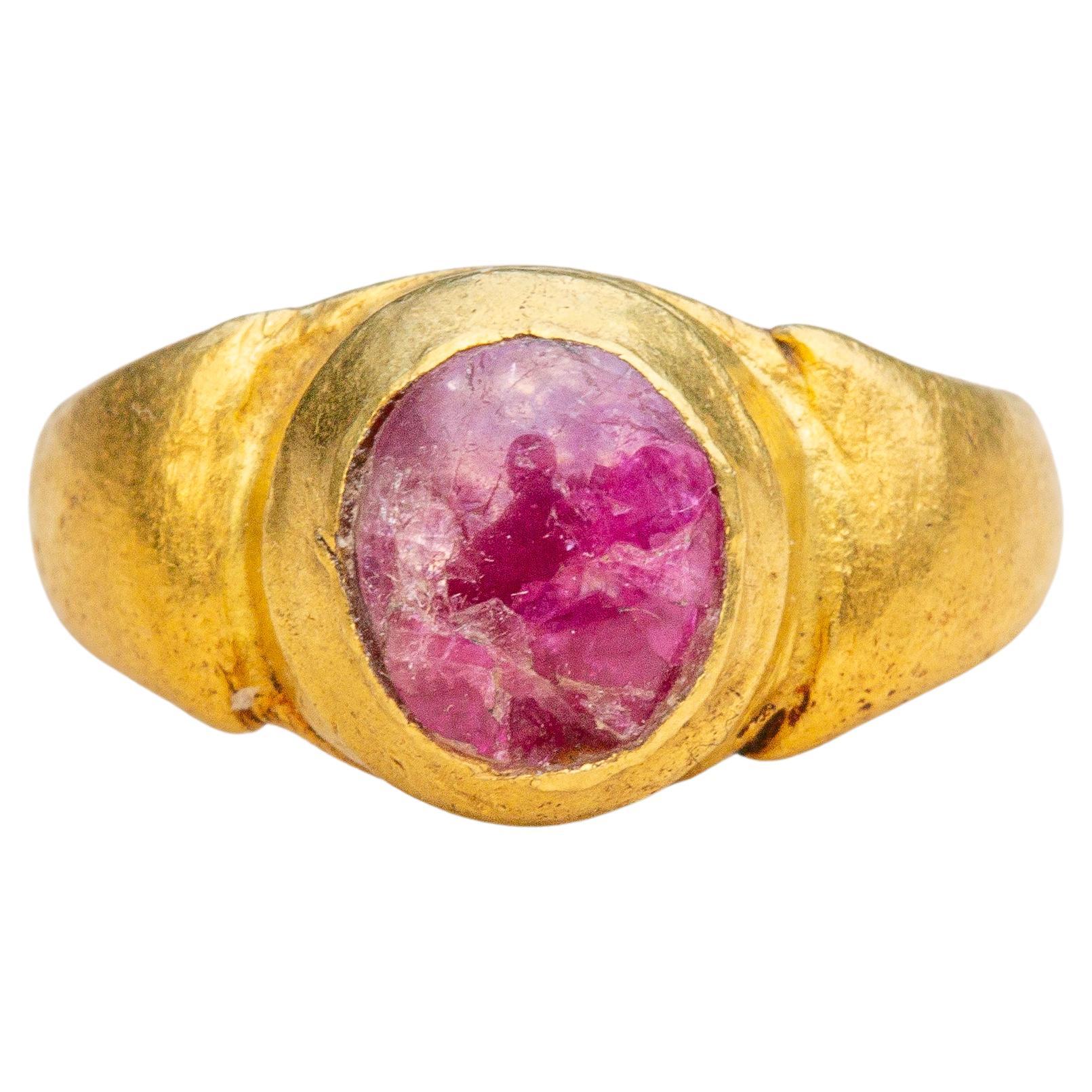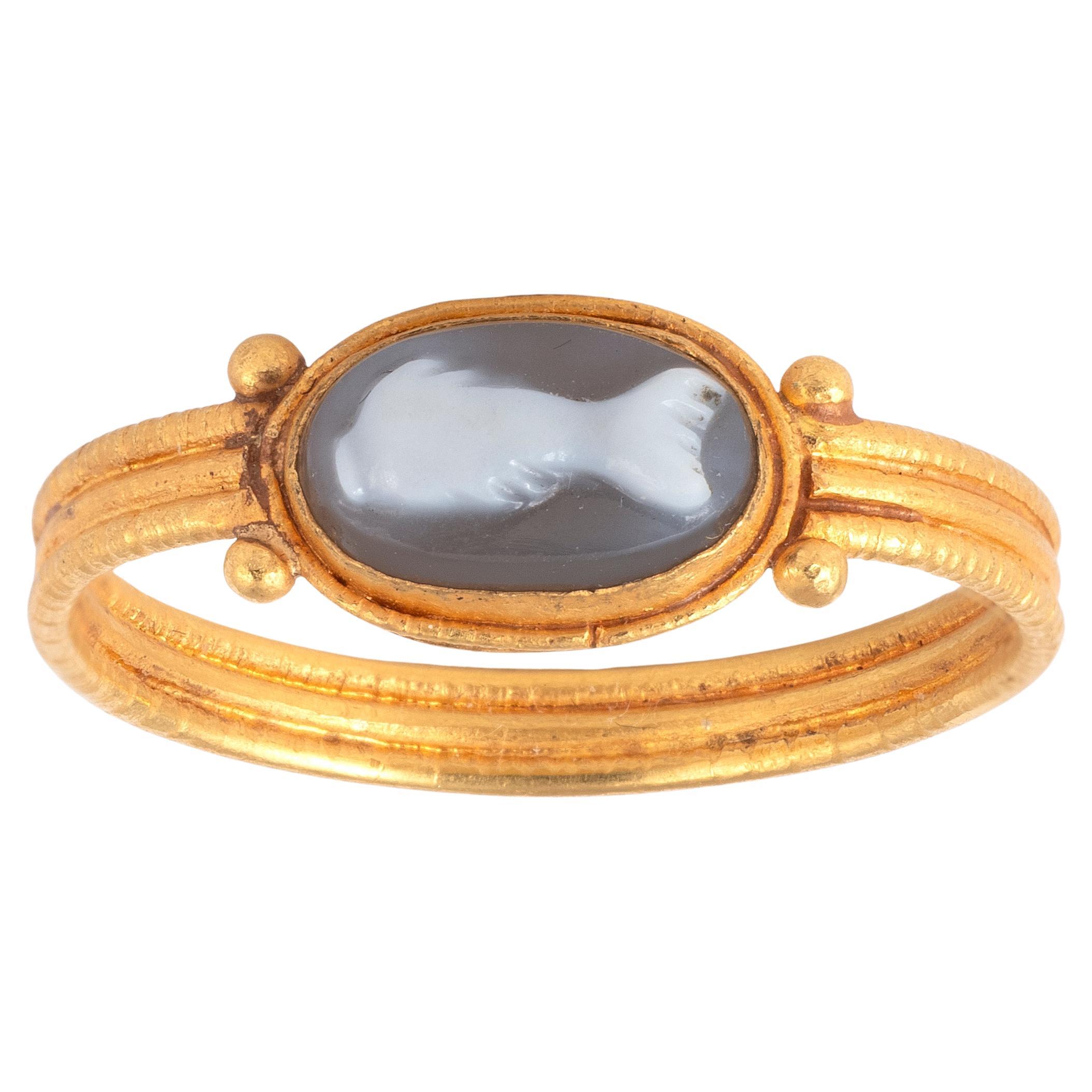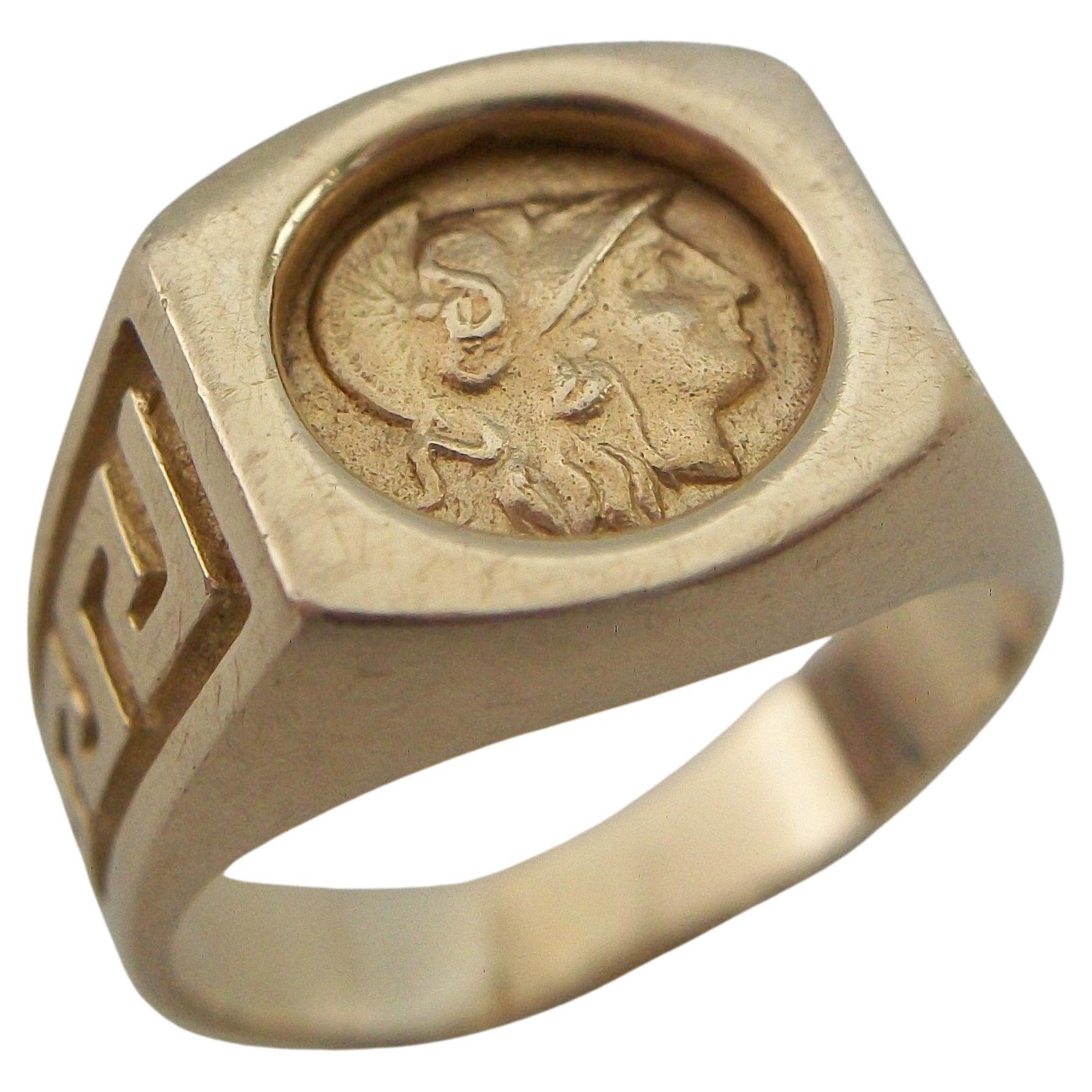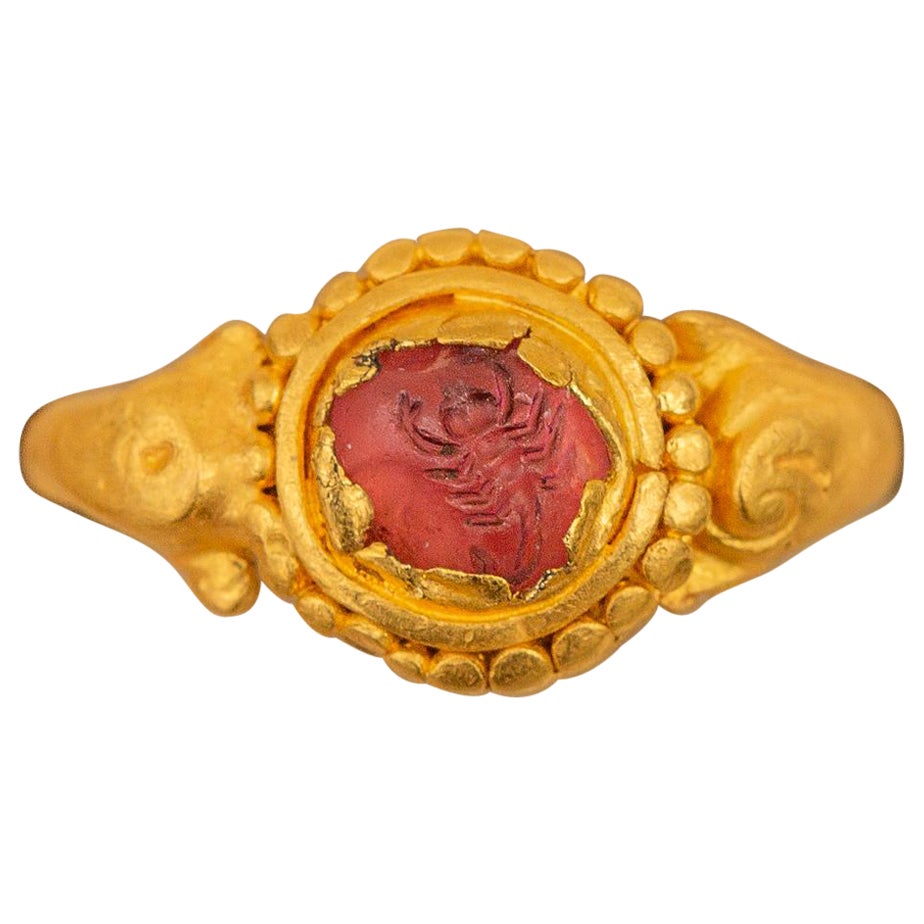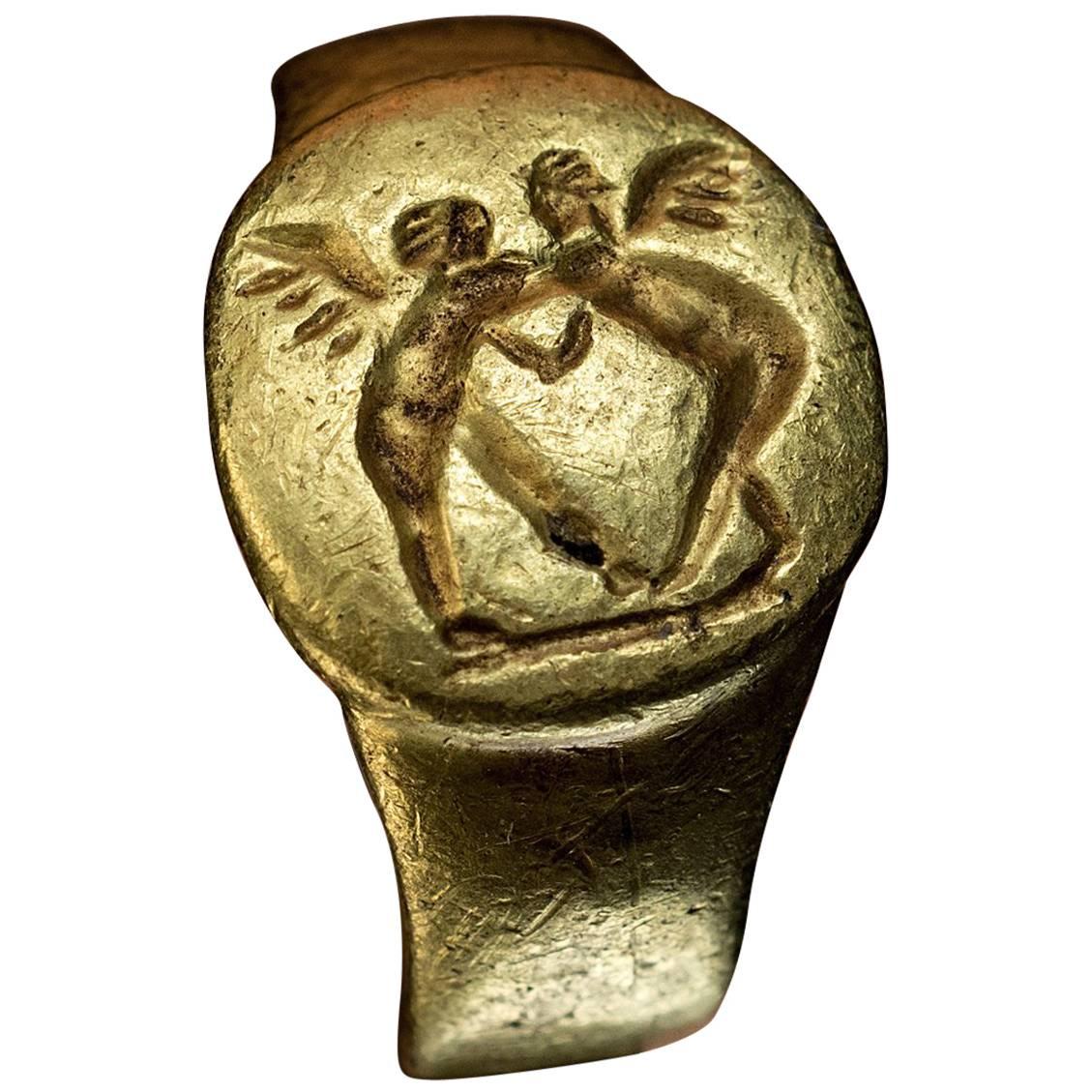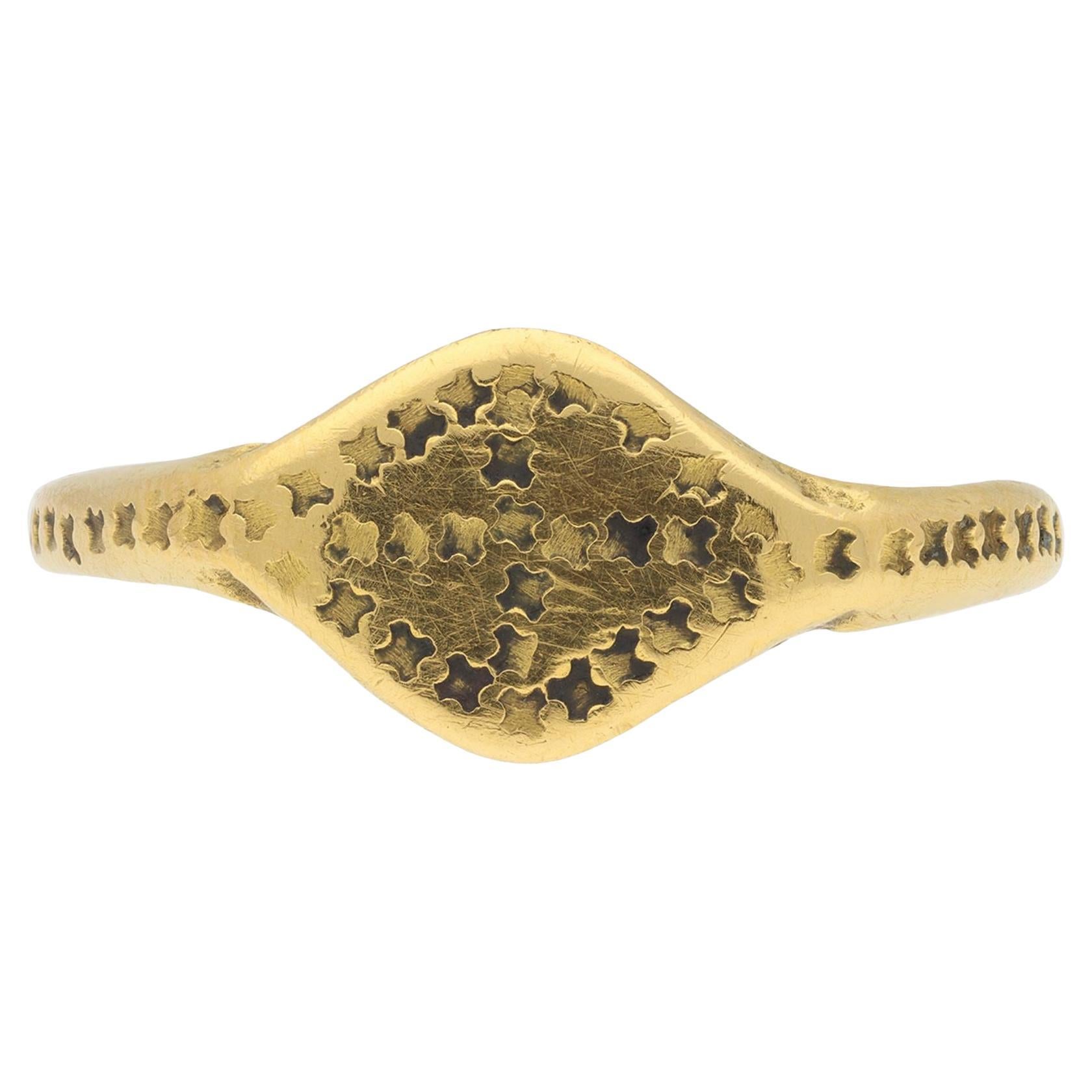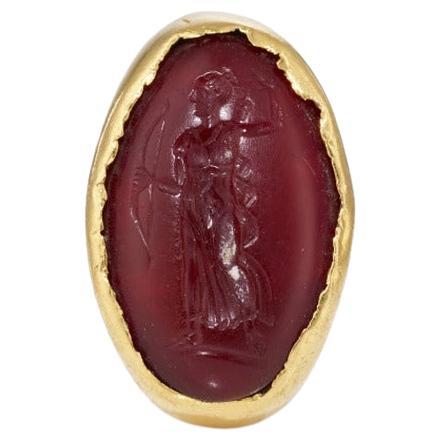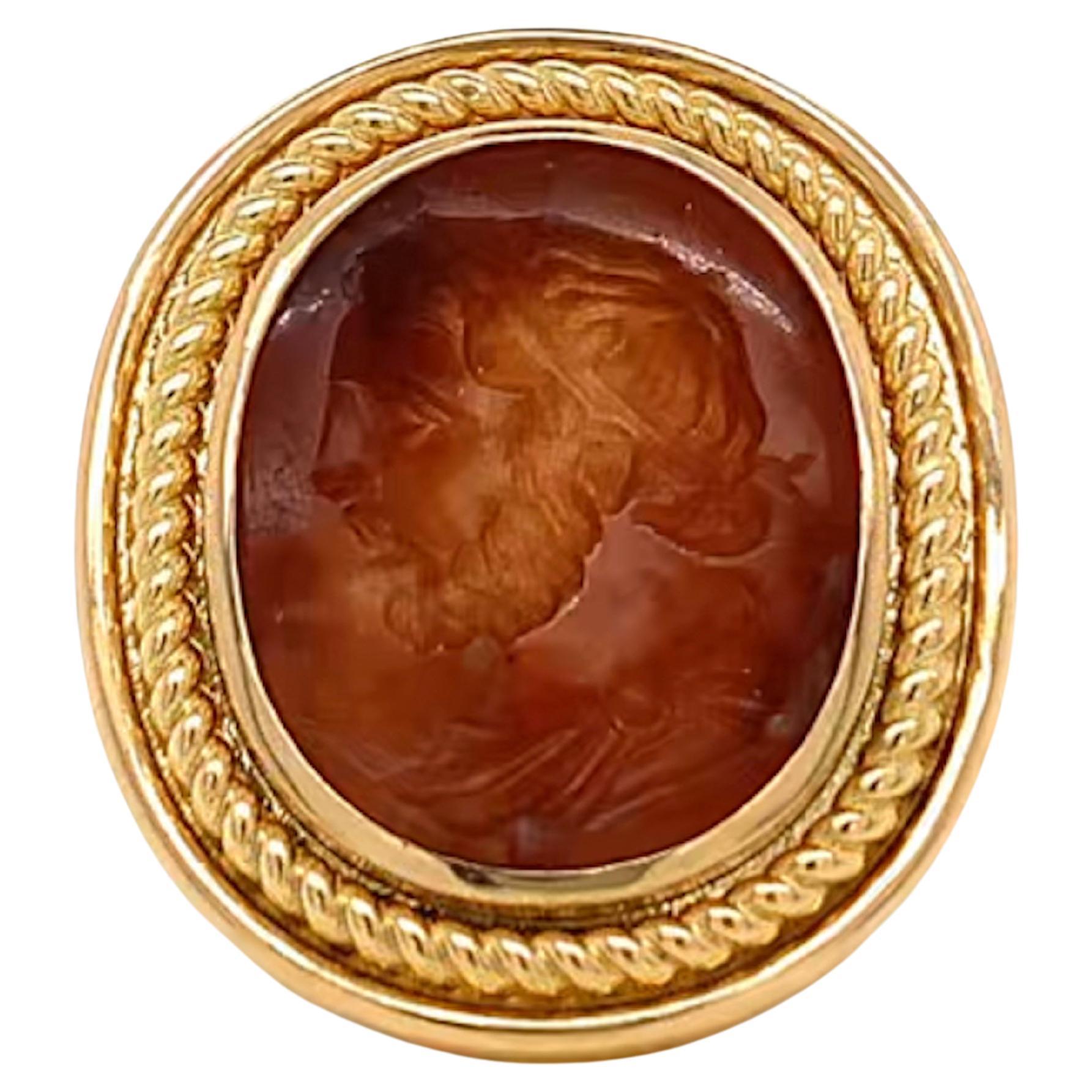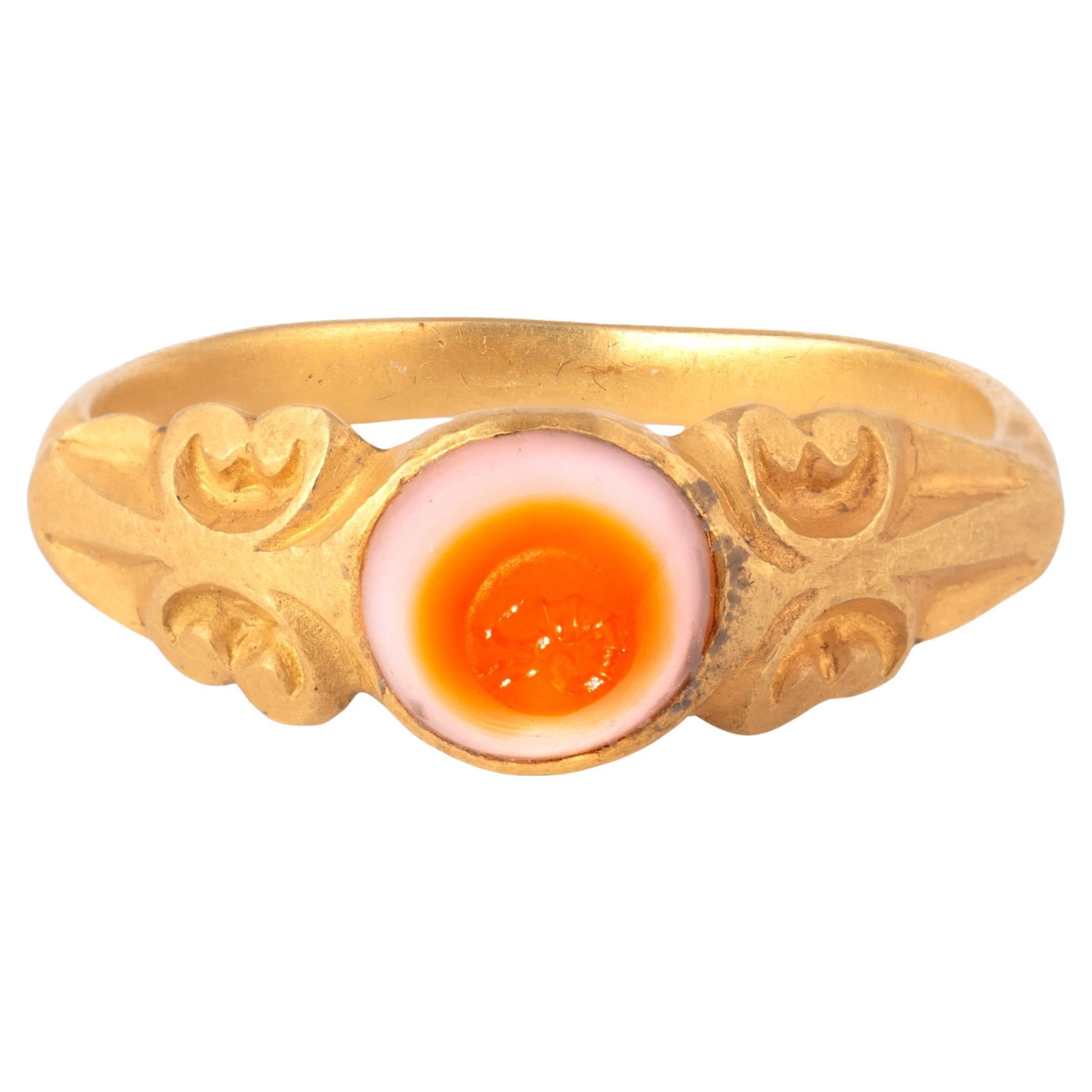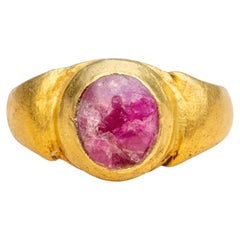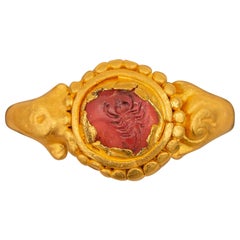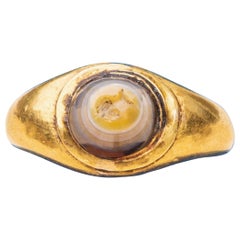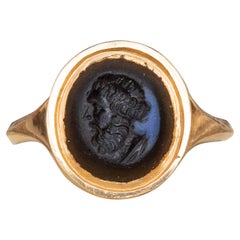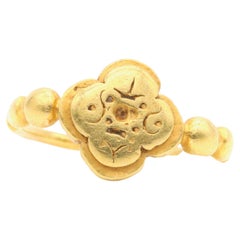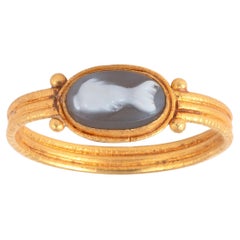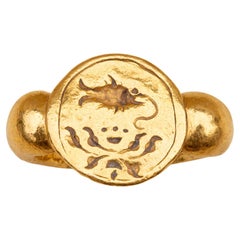
Ancient Gold Javanese Ring 9th-10th Century Fish and Lotus Flower
View Similar Items
Want more images or videos?
Request additional images or videos from the seller
1 of 14
Ancient Gold Javanese Ring 9th-10th Century Fish and Lotus Flower
Price:$4,606.51
$5,419.43List Price
About the Item
- Ring Size:6.25 US, Resizable
- Metal:
- Weight:22.6 g
- Style:
- Place of Origin:Java
- Period:
- Date of Manufacture:900
- Condition:Wear consistent with age and use.
- Seller Location:London, GB
- Reference Number:1stDibs: LU2845217784502
About the Seller
5.0
Vetted Professional Seller
Every seller passes strict standards for authenticity and reliability
Established in 2019
1stDibs seller since 2022
46 sales on 1stDibs
Authenticity Guarantee
In the unlikely event there’s an issue with an item’s authenticity, contact us within 1 year for a full refund. DetailsMoney-Back Guarantee
If your item is not as described, is damaged in transit, or does not arrive, contact us within 7 days for a full refund. Details24-Hour Cancellation
You have a 24-hour grace period in which to reconsider your purchase, with no questions asked.Vetted Professional Sellers
Our world-class sellers must adhere to strict standards for service and quality, maintaining the integrity of our listings.Price-Match Guarantee
If you find that a seller listed the same item for a lower price elsewhere, we’ll match it.Trusted Global Delivery
Our best-in-class carrier network provides specialized shipping options worldwide, including custom delivery.More From This Seller
View AllAncient Javanese Gold Ring with Ruby Cabochon Java Indonesian Antique Solitaire
Located in London, GB
A scarce early Javanese gold and ruby ring dating from the 7th-15th century Indonesian Classical period.
As expected with Javanese gem-set gold rings m...
Category
Antique 15th Century and Earlier Javanese Signet Rings
Materials
Ruby, Gold
Ancient Gold Amethyst Engraved Scorpion Ring Early Javanese Intaglio Ring
Located in London, GB
This scarce gold intaglio ring dates to the Indonesian Classical period, circa 8th–10th century.
The ring is crafted from high-karat gold (22K), featuring a circular bezel that holds an amethyst gemstone engraved with a scorpion motif. Scorpions were often considered symbols of protection in ancient traditions, aligning with Javanese beliefs that rings possessed magical properties to bring good fortune and guard against harm.
The stirrup-shaped shoulders, designed to mimic the form of water buffalo horns, are a hallmark of early Javanese craftsmanship. This distinctive design reflects both artistic expression and cultural symbolism rooted in Java’s agricultural and spiritual traditions.
Java, one of Indonesia’s largest islands, was a significant centre of civilisation and artistry during this period. Gold rings were not merely decorative but also served as currency, payment for fines, dowries, and even wedding feasts. Imported gemstones, like the present amethyst, were chosen for their astrological, magical, and medicinal properties, further enhancing their importance in Javanese society.
Referenced Examples:
Similar rings can be found in the Metropolitan Museum of Art (Accession No. 1998.544.298).
Additional examples are catalogued in Java Gold...
Category
Antique 15th Century and Earlier Engagement Rings
Materials
Amethyst, 22k Gold
Ancient Roman Gold Mens Signet Ring Conical Intaglio Ring Gem Carving
Located in London, GB
A superb ancient Roman agate intaglio ring. The high-karat gold signet ring is set with an engraved gemstone, known as an ‘intaglio’. It dates from between the 2nd to 3rd century AD and is a fine example of a Romano-British intaglio.
The conical-shaped agate gemstone displays various bands of colour ranging from honey brown to greyish-blue. The engraving depicts the bust of a man wearing a helmet, possibly winged which would depict Mercury, the Roman god of commerce, financial gain and communication. In Roman times, people would wear rings with the intaglio of Mercury in hope that the he would protect them and bless them with good financial fortune in their lives.
A number of referenced examples of similar ancient Roman conical shaped intaglios reside in notable museums all across the world, from the British Museum to the Louvre. A page with these examples and their sources can be found in the final photos of the listing. Similar examples can also be found in the extensive Alice and Louis Koch collection (items: 234, 235, 241, 301). Again see final images for reference.
The gold ring mount is of D-shaped cross-section and a hollow 22K gold construction. The ring has a fantastic smooth silk-like texture when worn. It remains in good overall condition and the intaglio is very secure in the mount. The gold mount dates to the late 18th to early 19th century, and the shape is inspired by ancient Roman ring...
Category
Antique 15th Century and Earlier Signet Rings
Materials
Agate, 22k Gold
Georgian 18th Century Signet Ring with Ancient Roman Nicolo Intaglio of Hercules
Located in London, GB
A superb ancient Roman nicolo intaglio set in a late 18th century gold signet ring. Nicolo intaglios are a particular type of intaglio ma...
Category
Antique Late 18th Century English Georgian Signet Rings
Small Ancient Roman Medusa Carved Cameo Gold Ring 2nd Century Gem Carving
Located in London, GB
A scarce and small ancient Roman gold Medusa cameo ring, circa 2nd to 3rd century AD.
The carved layered onyx gemstone is white in colour and depicts the bust of Medusa engraved wit...
Category
Antique 15th Century and Earlier Italian Classical Roman Signet Rings
Materials
Onyx, Gold
Small Ancient Indus Valley Bead Ring Etched Carnelian Cone Antique Gold Ring
Located in London, GB
A superb and rare ancient Indus Valley etched carnelian bead ring. The conical shaped carnelian gemstone in the centre dates from the middle of the third millennium BC. Deep orange in colour with white patterned etchings, these beads originate from the Indus Valley civilisation (parts of modern day Pakistan and India).
These carnelian beads were alkaline-bleached to develop the geometric white patterns visible on the exterior. The technique was first developed by the Harappans of the Indus Valley civilisation, and vast quantities have been found in archaeological sites all across the Indus Valley.
The conical stone has been set in a later high-karat gold ring mount, the hoop is hollow and of circular cross section which widens towards the bezel. This design and shape is typical of ancient gold rings...
Category
Antique 18th Century Indian Signet Rings
Materials
Carnelian, Gold
You May Also Like
Ancient 9th or 10th Century 22K Yellow Gold Javanese Sri Ring
Located in Staines-Upon-Thames, GB
An ancient gold ring, with Sri inscription, in 22 karat yellow gold.
This unique, unusual ring is steeped in history. Hailing from the 9th or 10th Century, this ancient piece of jewellery has been inscribed with a Sri or Shri motif. The Sri or Shri motif is related to the Hindu goddess of the same name, who is the goddess of rice, fertility, good fortune, and prosperity. Symbols like the lotus flower, an earthen pot...
Category
Antique 15th Century and Earlier Signet Rings
Materials
22k Gold, Yellow Gold
Ancient Viking 22kt Gold Spiral Serpent Ring - Circa 9th/10th Century
Located in Firenze, IT
A wonderful Viking Gold Ring formed of solid gold band with central raised ridge beautifully crafted to form an elegant coil representing a serpent.
...
Category
Antique 15th Century and Earlier Swedish Fashion Rings
Materials
Gold, 22k Gold
Byzantine Gold Icon Ring, circa 6th-10th Century
Located in London, GB
Byzantine gold icon ring. The central flat circular plaque engraved and with niello, finely depicting the image of Christ with halo between two crosses, all to a slim fully rounded wire shank. Tested yellow gold, approximately 4.9 grams in weight, circa 6th - 10th century...
Category
Antique 15th Century and Earlier Byzantine Signet Rings
Materials
Gold
Ancient Roman Gold ring with Agate Cameo Fish , circa 2nd Century AD
Located in Firenze, IT
The 2nd century ring has a gold frame with two grooves and gold globules welded to the upper junction, where is set a Roman cameo in agate, depicting a fish. This is a subject that w...
Category
Antique 15th Century and Earlier Italian Classical Roman Signet Rings
Materials
Agate, Gold, 22k Gold
Ancient Greek 4th Century BC Gold Coin Ring - 14K Gold Setting - Circa 1980's
Located in Chatham, CA
Ancient Greek 4th Century (330 BC - 220 BC) Alexander the Great 1/4 Stater gold coin (22K gold) - the antique coin recess mounted (prong set from behind) in a 14K yellow gold ring setting with Greek key details to the shoulders - warm aged patina - stamped 585 (14K) - worn maker's mark - Greece - circa 1980's.
Excellent antique / vintage condition - all original - coin not viewed outside the mount - no loss - no damage - no repairs - signs of age and use - ready to wear.
Coin Size / Dimensions - 7/16" (1.2 cm.) Diameter.
Coin Weight...
Category
Late 20th Century Greek Classical Greek Signet Rings
Materials
14k Gold, 22k Gold
Ancient Greek Gold Intaglio Ring Circa 4th Century BC
Located in Chicago, IL
A unique, museum quality ancient Greek gold ring, circa 4th century BC, likely a wedding ring.
The ring is engraved with two wrestling Erotes. When Aphr...
Category
Antique 15th Century and Earlier Greek Classical Greek Signet Rings
Recently Viewed
View AllMore Ways To Browse
Indonesian Wedding
Indonesian Antique Jewelry
Gold Toe Ring
Eagle Signet Ring
Eagle Signet
Mens Gia Diamond Band
Victorian Men Rings
18ct Mens Gold Ring
Men Pinky
Mens Opal Ring
Pinky Ring Men
Men Gold Pinky Ring
Roman Carnelian
19th Century Mens Rings
Mens Gold Onyx Ring
Roman Ring Agate
Mens Pearl Ring
Victorian Gold Mens Rings
